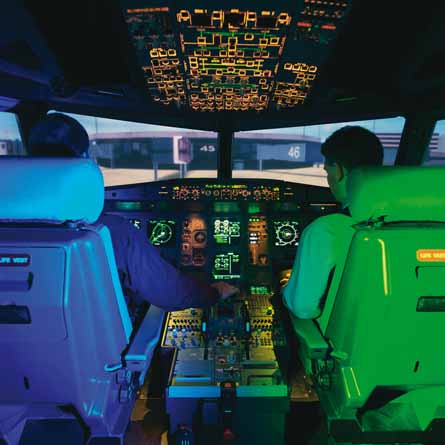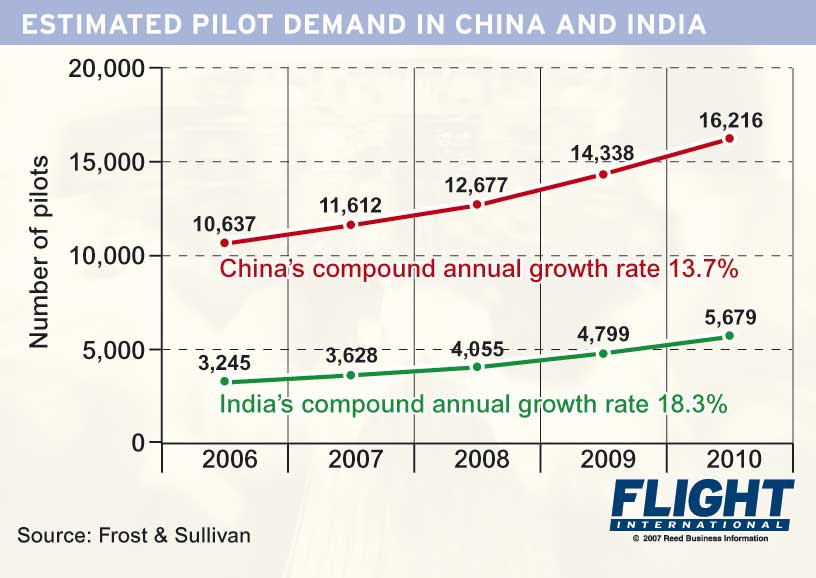This is Flight's special report on pilot training: How are the emerging markets of aviation planning to generate the manpower they need to fuel their expansion over the next decade? Click on the below links to read more.
Training special: India
There has never been a better time for aspiring young pilots in India - if they can find and afford training
Training special: China
Can China open enough flying schools - and, until it does, can overseas trainers manage the demand?
Training special: North America
China and India rely heavily on North American flying schools - but do they get value for money?
Training special: Australia
A passion for cricket is one reason why many Indian students prefer Australia to the USA for their training
Training special: New approach
Chinese students are the first to undergo training for the new multi-crew pilot licence
Training special: Graduating in the Gulf and filling a gap
Training special: Alpha Aviation's Philippine fillip
Training special: CAE works to get the mix right

Eager to learn
From China to the Middle East, the aviation boom has set off a skills scramble as countries struggle to find and train thousands of new pilots. We look at how flying schools in China and India, as well as training providers in Australia, North America and elsewhere, are responding to the challenge
China and India have become synonymous with aviation growth, their booming economies boosting demand for air travel. Airliner orders have reached the point where many Western manufacturers are establishing facilities in these markets to take advantage of the boom.
The demand for aircraft also means huge opportunities for Western training specialists, as it becomes clear the indigenous infrastructure in these emerging markets is inadequate and will not produce the numbers of pilots required in the coming decades.
China will be able to meet just 7-10% of its requirements for new pilots by the end of 2010, estimates Frost & Sullivan (see graph). In India, although the total number of pilots is much lower, local schools will be able to meet just 0.03-0.05% of demand in the same timeframe, the consultancy believes.
"The required pilots may be recruited from international locations if adequate training centres are not established in due time," says Subhranshu Sekhar Das, Frost & Sullivan's consulting manager, Asia-Pacific.

Mark Pearson, chief executive of training provider Alpha Aviation, says the 8,200 new jets forecast to be delivered to South-East Asia over the next two decades - an average of 400 a year - translates into a burgeoning demand for Western pilot training expertise in the region. India will require at least 4,000 new pilots over the next three years, Pearson estimates. China will need even more - 12,000 over the next four years, of which only 850-900 a year can be produced using its existing infrastructure.
Airlines are taking advantage of short-term, partial solutions, sending pilots overseas for training, increasing the retirement age or recruiting from abroad. Air China said last year it would look overseas for new pilots, highlighting the scale of the pilot deficit. The surging demand for trained pilots in emerging markets has also sparked controversy as established carriers accuse newcomers of "poaching", offering lucrative packages to those willing to move to up and coming airlines - a short-term practice that is certainly not sustainable.
Even allowing for short-term and partial solutions, Pearson foresees a strong demand for new entrants to the training market in these regions. Reports of airlines already delaying deliveries of new aircraft suggest more needs to be done, and done quickly, and that there is room for more Western entrants to this rapidly growing sector of the training market.
Source: Flight International



















